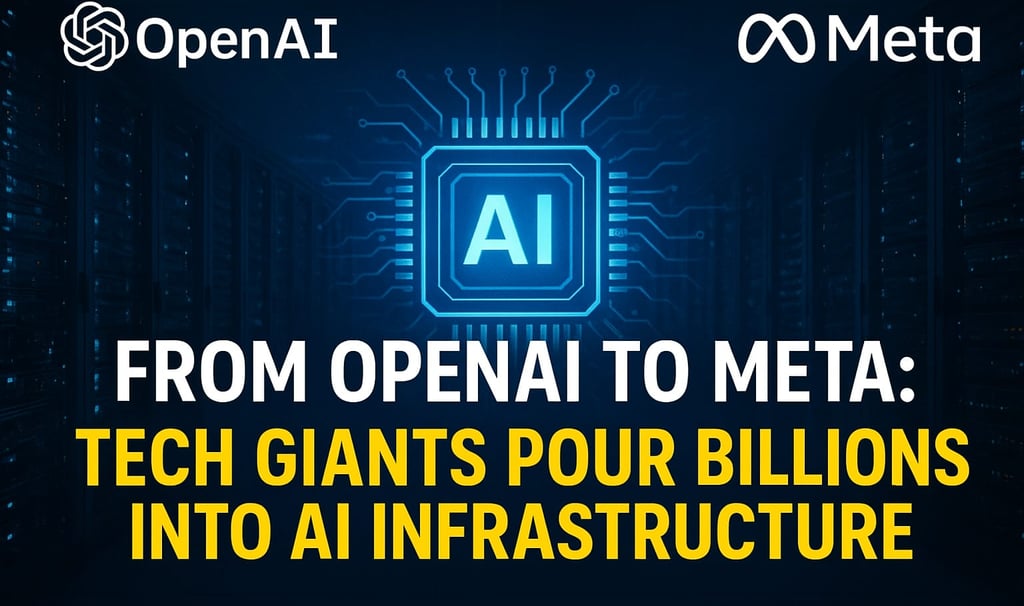From OpenAI to Meta: Billions Flow into AI Infrastructure to Power the Next Tech Revolution
From OpenAI to Meta, global tech giants invest billions in AI infrastructure to power the next generation of artificial intelligence innovation.
Raja Awais Ali
10/6/20252 min read


From OpenAI to Meta: Tech Giants Channel Billions into AI Infrastructure
October 6, 2025 — The global technology industry has reached a major inflection point as leading companies — including OpenAI, Meta, Google, and Microsoft — shift their focus beyond AI model creation toward massive investments in infrastructure. From chip manufacturing to data centers and high-speed computing networks, these investments are laying the groundwork for the next generation of artificial intelligence systems.
According to industry sources, OpenAI has finalized a multi-billion-dollar partnership with AMD, under which it will gain access to AMD’s latest high-performance AI chips. The agreement also gives OpenAI an option to acquire up to a 10% equity stake in AMD — a move that analysts say will strengthen OpenAI’s ability to scale its large language and visual intelligence models.
Meanwhile, Meta, the parent company of Facebook, Instagram, and Threads, has signed a $14.2 billion agreement with CoreWeave to secure additional GPU capacity and AI cloud infrastructure. This deal reflects Meta’s strategy to expand its in-house AI ecosystem, ensuring scalability for its generative AI platforms and digital services.
Experts emphasize that these massive infrastructure investments mark a paradigm shift in how success in AI is defined. The era when innovation depended solely on algorithms and model training is over — now, hardware and infrastructure are just as crucial. Without powerful chips, advanced cooling systems, and scalable data centers, even the most sophisticated AI models cannot operate effectively at global scale.
In the ongoing AI race, other tech giants such as Google DeepMind, Microsoft Azure AI, and Amazon Web Services (AWS) are also building supercomputing networks capable of running trillion-parameter models while minimizing energy consumption and operational costs.
Building and maintaining such infrastructure presents formidable challenges. AI data centers demand enormous amounts of electricity, and keeping them cool is both costly and environmentally taxing. Additionally, global chip supply constraints continue to pose risks, making it difficult to meet the accelerating demand for AI hardware.
To mitigate these challenges, companies are diversifying their supply chains, forming partnerships with multiple chipmakers including NVIDIA, AMD, and Intel. This strategy aims to ensure stability and reduce bottlenecks in AI chip production.
This surge in infrastructure spending underscores a central truth:
The future of artificial intelligence will depend not just on smart algorithms — but on the powerful systems that fuel them.
The companies that control this infrastructure will shape the direction of global AI innovation in the years to come. As AI becomes more deeply integrated into every aspect of modern life, this hardware-driven transformation could redefine industries, economies, and the technological foundation of the 21st century.